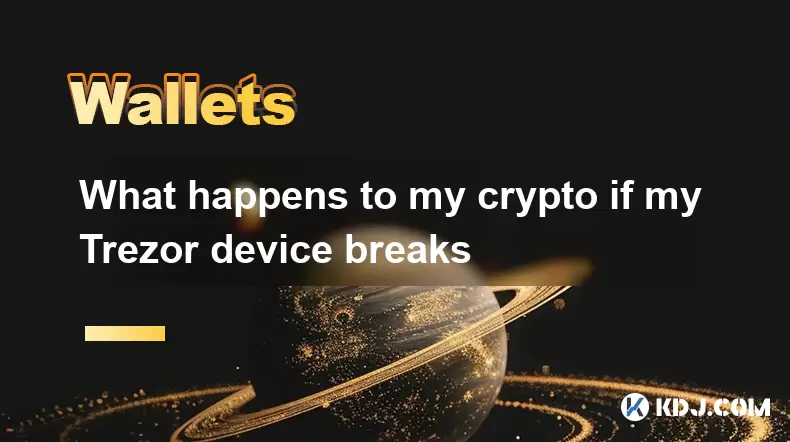-
 Bitcoin
Bitcoin $117,991.5647
-0.03% -
 Ethereum
Ethereum $2,966.4808
0.18% -
 XRP
XRP $2.8076
0.64% -
 Tether USDt
Tether USDt $1.0003
0.00% -
 BNB
BNB $689.9050
-0.63% -
 Solana
Solana $162.0407
-0.80% -
 USDC
USDC $0.9999
0.00% -
 Dogecoin
Dogecoin $0.1995
-1.51% -
 TRON
TRON $0.3001
-1.21% -
 Cardano
Cardano $0.7426
3.25% -
 Hyperliquid
Hyperliquid $47.7978
2.84% -
 Stellar
Stellar $0.4411
16.52% -
 Sui
Sui $3.4267
0.15% -
 Chainlink
Chainlink $15.3148
0.07% -
 Bitcoin Cash
Bitcoin Cash $506.5880
-1.91% -
 Hedera
Hedera $0.2222
12.41% -
 Avalanche
Avalanche $21.2049
1.67% -
 UNUS SED LEO
UNUS SED LEO $9.0606
-0.19% -
 Shiba Inu
Shiba Inu $0.0...01325
-0.86% -
 Toncoin
Toncoin $2.9979
0.32% -
 Litecoin
Litecoin $94.3717
1.13% -
 Polkadot
Polkadot $3.9873
-0.29% -
 Monero
Monero $336.1497
0.92% -
 Dai
Dai $0.9999
-0.01% -
 Uniswap
Uniswap $8.5189
-0.60% -
 Ethena USDe
Ethena USDe $1.0005
-0.04% -
 Pepe
Pepe $0.0...01236
-0.92% -
 Bitget Token
Bitget Token $4.4002
-0.23% -
 Aave
Aave $303.5433
1.05% -
 Bittensor
Bittensor $391.1314
-0.35%
How do I enable multi-signature function on Keystone Pro?
The Keystone Pro's multi-signature function enhances security by requiring multiple signatures for transactions, ideal for businesses and organizations.
Apr 05, 2025 at 12:14 am

Introduction to Multi-Signature Function on Keystone Pro
The Keystone Pro is a hardware wallet designed to provide robust security for your cryptocurrency assets. One of its advanced features is the multi-signature function, which enhances security by requiring multiple signatures to authorize transactions. This article will guide you through the process of enabling the multi-signature function on your Keystone Pro, ensuring that you can manage your assets with an added layer of protection.
Understanding Multi-Signature Wallets
Before diving into the setup process, it's important to understand what a multi-signature wallet is. A multi-signature wallet requires more than one private key to authorize a transaction. This means that multiple parties must agree and sign off on a transaction before it can be executed. This feature is particularly useful for businesses, organizations, or individuals who want to add an extra layer of security to their cryptocurrency transactions.
Preparing for Multi-Signature Setup
To enable the multi-signature function on your Keystone Pro, you will need to prepare a few things:
- Multiple Keystone Pro devices: Depending on the number of signatures required, you will need at least two Keystone Pro devices.
- A compatible wallet software: You will need a wallet software that supports multi-signature functionality, such as Electrum or MyEtherWallet.
- A computer or mobile device: You will need a device to connect your Keystone Pro to and manage your wallet.
Setting Up Multi-Signature on Keystone Pro
To set up the multi-signature function on your Keystone Pro, follow these detailed steps:
- Connect your Keystone Pro to your computer or mobile device: Use the provided USB cable or Bluetooth connection to link your Keystone Pro to your device.
- Open your wallet software: Launch the wallet software that supports multi-signature functionality, such as Electrum or MyEtherWallet.
- Create a new multi-signature wallet: In your wallet software, navigate to the option to create a new wallet and select the multi-signature option. Follow the prompts to set up the wallet.
- Add your Keystone Pro devices: You will be prompted to add the public keys from your Keystone Pro devices. Connect each device one by one and follow the instructions to import the public keys into your wallet software.
- Configure the number of signatures required: Set the number of signatures required to authorize a transaction. For example, if you have three Keystone Pro devices, you might set it to require two out of three signatures.
- Save and backup your wallet: Once the multi-signature wallet is set up, make sure to save and backup your wallet configuration. This is crucial for recovering your wallet in case of any issues.
Verifying Multi-Signature Setup
After setting up the multi-signature function, it's important to verify that it is working correctly. Here's how you can do it:
- Initiate a test transaction: Use your wallet software to initiate a small test transaction. This transaction should require the specified number of signatures to be executed.
- Sign the transaction with the required devices: Connect the required number of Keystone Pro devices and sign the transaction using each device. Follow the prompts on each device to complete the signing process.
- Verify the transaction: After signing, check your wallet software to ensure that the transaction has been successfully authorized and is pending on the blockchain.
Managing Multi-Signature Transactions
Once your multi-signature function is set up and verified, you can start managing your transactions. Here are some tips for managing multi-signature transactions effectively:
- Keep your devices secure: Since multiple devices are involved, it's crucial to keep each Keystone Pro device secure and in a safe location.
- Coordinate with other signers: If you are using the multi-signature function with other parties, ensure that you have a clear communication channel to coordinate the signing of transactions.
- Regularly backup your wallet: Always keep your wallet configuration backed up in a secure location to prevent loss of access to your funds.
Frequently Asked Questions
Q: Can I use the multi-signature function with different types of cryptocurrencies?
A: Yes, the multi-signature function on Keystone Pro can be used with various cryptocurrencies, as long as your wallet software supports them. Make sure to check the compatibility of your wallet software with the specific cryptocurrencies you want to use.
Q: What happens if one of the Keystone Pro devices is lost or stolen?
A: If one of the devices is lost or stolen, you can still access your funds as long as you have the required number of signatures to authorize transactions. However, it's important to immediately revoke the public key of the lost or stolen device from your wallet configuration to prevent unauthorized access.
Q: Can I change the number of signatures required after setting up the multi-signature wallet?
A: Yes, you can change the number of signatures required, but this will require you to set up a new multi-signature wallet configuration. Make sure to back up your current configuration before making any changes.
Q: Is it possible to use the multi-signature function with a single Keystone Pro device?
A: No, the multi-signature function requires at least two devices to work. If you only have one Keystone Pro, you will need to acquire additional devices to enable this feature.
Disclaimer:info@kdj.com
The information provided is not trading advice. kdj.com does not assume any responsibility for any investments made based on the information provided in this article. Cryptocurrencies are highly volatile and it is highly recommended that you invest with caution after thorough research!
If you believe that the content used on this website infringes your copyright, please contact us immediately (info@kdj.com) and we will delete it promptly.
- Snorter Trading Bot: The Meme Coin Presale That's More Than Just Hype
- 2025-07-13 18:30:16
- Unlocking Blockchain Insights: A Deep Dive with Bitquery API for Data Query
- 2025-07-13 18:30:16
- HYPE Token & Hyperliquid: Riding the DeFi Wave with Open Interest
- 2025-07-13 16:30:16
- Unilabs Finance Takes Center Stage: Leaving Pepecoin and Floki Inu in the Dust?
- 2025-07-13 16:30:16
- Crypto Investors Ditching Meme Coins for BlockchainFX: The Smart Money Move?
- 2025-07-13 17:05:16
- Bitcoin, Indian Investors, and Tax Filing: Navigating the Crypto Boom
- 2025-07-13 17:05:16
Related knowledge

What is a hardware wallet's secure element
Jul 11,2025 at 10:14pm
What is a Hardware Wallet's Secure Element?A hardware wallet is one of the most secure ways to store cryptocurrencies. Unlike software wallets, which ...

What is the difference between a custodial and non-custodial wallet
Jul 13,2025 at 03:21am
Understanding Wallet Types in CryptocurrencyIn the world of cryptocurrency, digital wallets play a crucial role in managing and securing assets. A wal...

How to add a new network to MetaMask
Jul 11,2025 at 11:42pm
Understanding the Need to Add a New NetworkWhen using MetaMask, a popular Ethereum-based cryptocurrency wallet, users often need to interact with diff...

How to add Ethereum L2 networks like Arbitrum to Trezor
Jul 11,2025 at 12:36am
What Is Ethereum L2 and Why Add It to Trezor?Ethereum Layer 2 (L2) networks, such as Arbitrum, are scaling solutions designed to reduce congestion on ...

What happens to my crypto if my Trezor device breaks
Jul 11,2025 at 01:49pm
Understanding Hardware Wallet FailureWhen you store cryptocurrency in a Trezor hardware wallet, the private keys are kept offline, offering a high lev...

How to find a specific receiving address on my Trezor
Jul 09,2025 at 10:36pm
Understanding the Purpose of a Receiving AddressA receiving address is a unique identifier used in blockchain networks to receive cryptocurrency. Each...

What is a hardware wallet's secure element
Jul 11,2025 at 10:14pm
What is a Hardware Wallet's Secure Element?A hardware wallet is one of the most secure ways to store cryptocurrencies. Unlike software wallets, which ...

What is the difference between a custodial and non-custodial wallet
Jul 13,2025 at 03:21am
Understanding Wallet Types in CryptocurrencyIn the world of cryptocurrency, digital wallets play a crucial role in managing and securing assets. A wal...

How to add a new network to MetaMask
Jul 11,2025 at 11:42pm
Understanding the Need to Add a New NetworkWhen using MetaMask, a popular Ethereum-based cryptocurrency wallet, users often need to interact with diff...

How to add Ethereum L2 networks like Arbitrum to Trezor
Jul 11,2025 at 12:36am
What Is Ethereum L2 and Why Add It to Trezor?Ethereum Layer 2 (L2) networks, such as Arbitrum, are scaling solutions designed to reduce congestion on ...

What happens to my crypto if my Trezor device breaks
Jul 11,2025 at 01:49pm
Understanding Hardware Wallet FailureWhen you store cryptocurrency in a Trezor hardware wallet, the private keys are kept offline, offering a high lev...

How to find a specific receiving address on my Trezor
Jul 09,2025 at 10:36pm
Understanding the Purpose of a Receiving AddressA receiving address is a unique identifier used in blockchain networks to receive cryptocurrency. Each...
See all articles

























































































